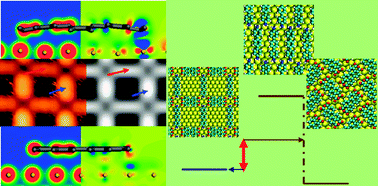The development of a detailed theoretical understanding of surface-supported supramolecular networks is important for designing novel organic nanodevices. By comparing with STM experiments, we show that van der Waals corrections to density functional theory (DFT) in the generalized gradient approximation (GGA) are mandatory to correctly reproduce the electronic and geometric structure of a prototypical system of this kind, the self-assembled hydrogen bonded network formed by 3,4,9,10-perylenetetracarboxylic dianhydride (PTCDA) and 4,4′′-diamino-p-terphenyl (DATP) deposited on Au(111). Our results reproduce both the network structure and its higher stability with respect to homomolecular networks. By successful comparison with the experiments, we demonstrate that dispersive interactions must be taken into account when rationally designing organic semiconductor nanostructures on a metallic substrate. DFT-GGA alone would fail in predicting geometric and electronic properties for weakly bounded large organic adsorbates on coinage metal surfaces.

You have access to this article
 Please wait while we load your content...
Something went wrong. Try again?
Please wait while we load your content...
Something went wrong. Try again?


 Please wait while we load your content...
Please wait while we load your content...